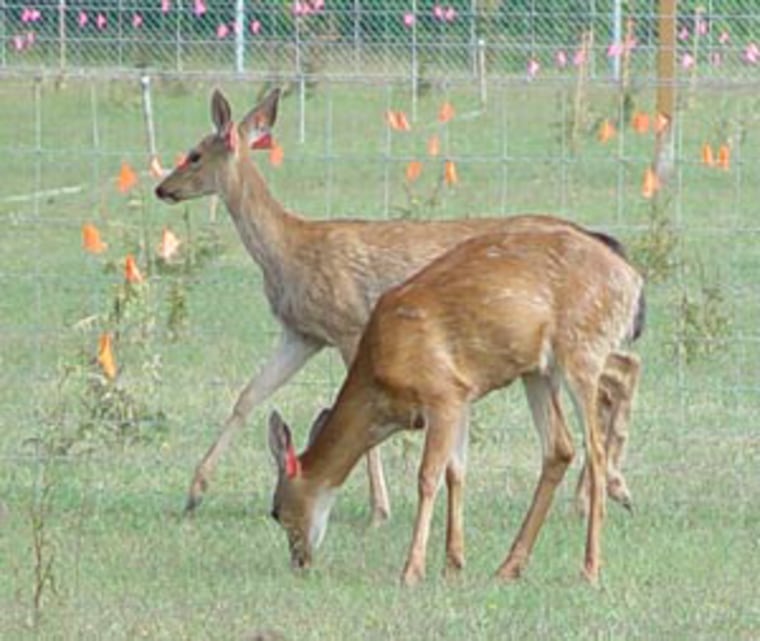Forty years ago, Charlie Scheer rarely saw a deer near his 625-acre nursery on the eastern end of Long Island.
Today, he regularly sees five or six just crossing the road when he drives to his local deli in the morning.
For Scheer, 63, president of the Long Island Farm Bureau, the animals are more akin to vermin than furry woodland creatures. Across the country, the rising white-tailed deer population is wreaking havoc on farms, changing the ecology of forests and causing ever more motor vehicle accidents and fatalities.
“We’re a wholesale nursery and the deer can do a lot of damage in one night, both feeding and rutting,” Scheer said. “They go after anything. They’re not picky. It’s one of our most pressing problems.”
Deer damage to agriculture in New York was between $58 million and $60 million in 2003, said Paul Curtis, an associate professor and extension wildlife specialist at Cornell University.
Explosive growth nationwide
New York’s Department of Environmental Conservation estimates there are now 1 million deer living in the state. Nationally, the white-tailed deer population has increased from about 500,000 in the early 1900s to 25 million to 30 million today, according to various researchers.
In pre-European settlement times, deer population density was 10 to 15 deer per square mile. In the 19th century, numbers dwindled as land was cleared for agriculture and commercial hunting became widespread.
In the early 20th century, states limited hunting, preserved open space and imported the animals. Much of the land cleared for agriculture has since been converted back to wild land as farmers abandoned the business.
Now, in places like southern New York and northern Pennsylvania, there are 30 to 35 deer per square mile, Curtis said.
“In some ways we’ve been too successful at bringing the deer back,” Curtis said.
While they still have some predators in the Northeast, mostly coyotes or bobcats, their main animal predators, wolves, are gone.
Man is now a deer’s most feared predator, but the number of hunters is declining, especially among teenagers who today have more options to fill their time.
Deer eat away future forest
Today’s high deer population may shape how the country’s forests look decades from now. The animals are reducing the number of trees and seedlings and affecting which species will survive, forestry experts say.
In the 14,000-acre Letchworth State Park in western New York, a 1,200-acre “safety area” for recreation where hunting is forbidden has seen vast damage from overbrowsing by deer.
“There are no saplings, no underbrush for ground nesting birds,” said Richard Parker, regional director of the Genesee State Park Region. “There will be no regeneration of the forest. In 40 to 50 years, as the current forest dies, there will be nothing to replace it.”
The deer are “eating anything and everything that’s there,” he said.
With voracious deer gobbling red oak, sugar maple and white ash seedlings, species like black birch and beech are gaining an edge. The loss of ground-level trees also removes habitat for several species of songbirds that need them for nesting.
'Problem of our own making'
Michael Conover, a wildlife professor and director of the Jack Berryman Institute at Utah State University, estimates deer cause at least $750 million in damage to the United States timber industry annually.
Humans, too, face increased dangers. There were 1.5 million deer and vehicle crashes in 2003, injuring 13,713 people and causing $1.1 billion in vehicle damage, according to a study by the Insurance Institute for Highway Safety released in November.
Control programs vary, with some towns and cities hiring sharp shooters to cull the herd, some states expanding their hunting seasons, and many encouraging the hunting of female deer.
Those programs have had mixed results with many hunters still reluctant to take female deer after years of chasing antlered bucks. And most hunters only take two or three a year because they don’t have the time or space to butcher more.
“We view it as problem of our own making,” said Laura Simon, field director of urban wildlife and sanctuaries program for the Humane Society of the United States. “We have created an ideal landscape for deer.”
